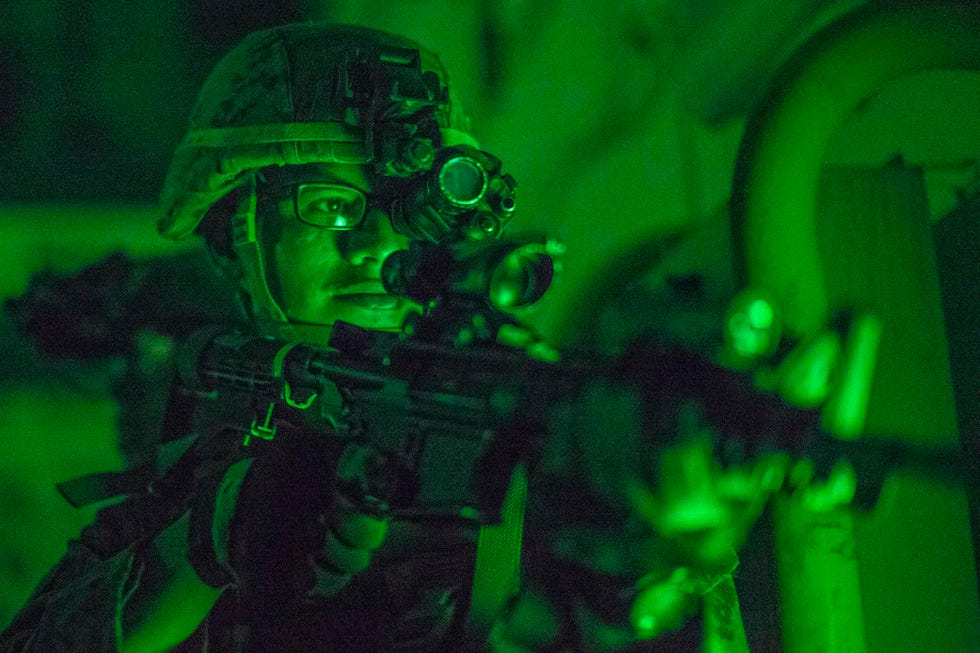- Researchers in China and the U.S. have created injectable night vision that works in mice.
- If the technology transfers to humans, it could mean doing away with large, cumbersome night vision goggles for troops.
- The only problem? The process requires injections into the eyeball.
In the near future, U.S. troops could trade in their night vision goggles for a direct eye injection that allows them to see in the dark. The process, being developed by scientists in both the U.S. and China, has already proven successful in laboratory mice. The researchers are confident it would work in humans, too.
Today, U.S. troops wear large goggles to see in the dark. The devices use infrared sensors to pick up on heat sources, painting an image of a person’s surroundings based on radiated warmth. Night vision goggles (NVG), while effective, are expensive, bulky, and require electrical power to operate.
NVGs also heavily restrict the wearer’s field of view, making it similar to viewing the world through a pair of toilet paper tubes. That can create a false perspective of wearer’s surroundings, which in wartime could prove dangerous.
In a study from the University of Massachusetts Medical School, researchers injected nanoparticles that converted infrared light into visible light into the eyes of mice. Those mice were then placed in a maze along with mice who didn't receive the injections, and were able to find their way out of the maze. The nanoparticles bound to the photoreceptors of the mice's eyes and provided night vision for up to 10 weeks without any ill effects.
Xue Tian, a scientist based in China, is quoted as saying he “definitely” thought it would work in humans.
There are a number of issues that have to be addressed before this could deploy with U.S. troops. For one, until scientists perform human trials, we won’t know how effective the nanoparticles are, and how well humans will see in the dark. If it’s subpar to current night vision goggle technology, we don’t know if it can be meaningfully improved.
And if this only last 10 weeks, it will require frequent reinjections to soldiers stationed in combat zones, often in grubby, somewhat unsanitary conditions. Plus, eyeball injections will make even the toughest soldiers weak in the knees.
On the other hand, if injectable night vision does work, it means no longer buying expensive night vision goggles. And that means one less power-hungry electronics system on the battlefield, reducing the need for batteries. It will lighten the soldier’s load, making troops more mobile and less fatigued. It promises a much wider field of view for soldiers that matches their daytime vision, giving them equal situational awareness day or night.

Kyle Mizokami is a writer on defense and security issues and has been at Popular Mechanics since 2015. If it involves explosions or projectiles, he's generally in favor of it. Kyle’s articles have appeared at The Daily Beast, U.S. Naval Institute News, The Diplomat, Foreign Policy, Combat Aircraft Monthly, VICE News, and others. He lives in San Francisco.













